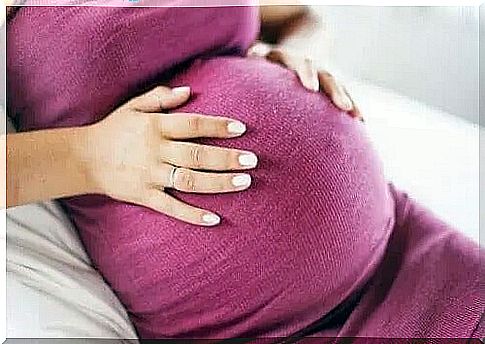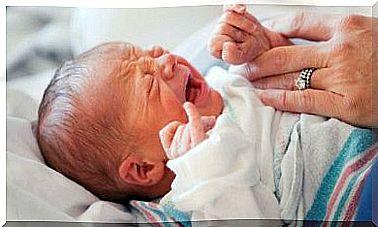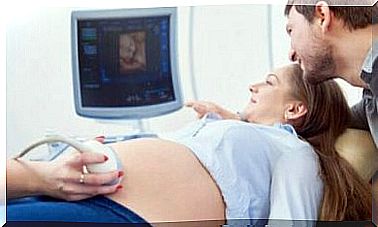Polytrauma And Pregnancy In Women

The combination of these factors has led to an increase in obstetric trauma and affects the health of both mothers and babies. Pregnant women have different physical and physiological characteristics than non-pregnant women. Therefore, it is important to know how to treat polytrauma and pregnancy in the best possible way.
Polytrauma and pregnancy
Trauma has become the leading cause of non-obstetric death during pregnancy. Within the mother-fetus binomial, they may suffer from injuries from the trauma itself and from the pregnancy.
The anatomical and physiological changes that occur in women during pregnancy can alter the body’s response to the same trauma. Therefore, these factors will affect the effects of polytrauma during pregnancy:
- How far her pregnancy is
- Type and severity of the trauma
- Changes in the fetus or placenta
In the first place, it is actually important to take care of the mother first. Later, when the mother is stabilized, she can take better care of her baby.
Cardiovascular system
Due to the changes that occur during pregnancy, pregnant women have more blood. Therefore, it is important to control any internal bleeding that may occur due to the trauma.
This increase in blood volume means that the mother takes longer to go into shock. The baby will therefore lose oxygen much earlier. This is why one needs to treat it quickly even though the blood loss does not seem to affect the mother.
Intermediate organs
It is also important to look for possible damage to the vagina, crotch and rectum after the trauma. These can mean that there are problems with the obstetric-gynecological area.
Cardiopulmonary resuscitation (CPR)
For CPR in pregnant women , there is controversy about when to perform a caesarean section if CPR does not work. Some say that you should do it after a set time with CPR, while others say that you should do it all at the same time.
To make a decision, you need to consider other factors. For example, if the fetus is older than 24 weeks, maternal status, etc.
Penetrating damage
As the fetus grows in the womb, it causes the organs to move. Therefore, it creates a risk of damage to the uterus and reduces the damage to other organs.
The uterine muscle, amniotic fluid and the fetus make it possible to absorb a lot of energy from the penetrating object. In this way, it minimizes the damage to other organs.
Polytrauma and pregnancy: specific injuries for pregnant women
There are certain injuries that occur only in cases of polytrauma and pregnancy.
Uterine trauma
A blow to the uterus can cause the uterine muscle to rupture. This is called the myometrium. Furthermore, the rest of its layers will be bad for both the mother and the baby.
An torn uterus can be complete or incomplete, and it usually has these signs and symptoms:
- The baby’s heart rate is reduced
- Abdominal pains
- Fewer or no contractions (if present before)
- Tachycardia in the mother or low blood pressure due to blood loss
- Vaginal bleeding
- Hematuria (blood in the urine)
- Ascension of the fetus if the fetus is forced out through the abdominal cavity
The treatment in case of uterine rupture focuses on stabilizing the mother as well as anesthesia. Furthermore, the mother may need surgery (laparotomy) to remove the fetus.
Uterine contractions
Uterine contractions can occur before going into labor. This can happen after a trauma in stressful situations if one is dehydrated etc. It is the most common obstetric problem due to trauma.
Depending on the situation of the mother and baby, there are different approaches. Every situation is different. It depends, for example, on whether the amniotic sac is complete or not, what week of pregnancy the mother is in, the status of the mother or fetus and more.
- Monitoring of the mother and fetus
- Administration of tocolytic medication to stop contractions
- Let the birth continue
- Expected attitude
Detachment of the placenta
Due to polytrauma and pregnancy , it can also cause placental detachment. This is a partial or total detachment of the placenta before the baby is born after week 20.
This situation is an emergency as the placenta is the organ that provides the baby with food and oxygen. If this is completely detached, it will stop getting blood.
Some of the signs and symptoms that may occur are:
- Hypoxia in the fetus
- Visible or vaginal internal bleeding
- Formation of blood clots in the body
- Shock and other complications
Treating this situation focuses on ensuring that the mother is stable. It also focuses on delivering the baby either vaginally or by cesarean section.
Fetal-mother bleeding
Transmission of fetal blood to the mother is more common in women who have suffered from a trauma. Some of the consequences of this are:
- Rh sensitization in mothers with Rh- and a baby with Rh +
- Arrhythmia
- Anemia
- Fetal death due to excessive blood loss
To avoid Rh sensitization, all women with Rh will receive Rh immunoglobulin. Furthermore, doctors will examine the mother and baby to decide what to do next.
Premature tearing of membranes
This is where the amniotic sac is spontaneously torn before birth. Specialists will consider the following things to decide what to do:
- Number of weeks of pregnancy and fetal maturity
- How much amniotic fluid is lost
- Risk of infection
- Characteristics of amniotic fluid
Polytrauma and pregnancy: birth defects
In trauma that occurs during pregnancy, fetal health is also at stake. One of the problems that the fetus may have, in addition to those we have already mentioned, is the risk of fetal stress.
The consequences of trauma to the fetus also occur due to the changes in the baby’s oxygen level. Doctors diagnose fetal stress through monitoring, and the signs are:
- Changes in the baby’s heart rate
- Fetal deceleration after uterine contractions
Concluding thoughts on polytrauma and pregnancy
Every situation is different, so doctors will assess each case individually. Furthermore, they may need to make other reservations depending on the condition of the baby.









